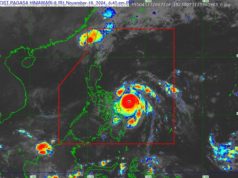Inconsistencies in classifying deaths have made it difficult to compare the magnitude of different disasters.
With Hurricane Michael’s assault on Florida, officials have again begun tracking storm deaths. But a look at how death tolls were tallied after Hurricane Florence last month showed that what qualified as a storm-related death varied not only state to state and county to county, but even based on who was filling out a death certificate.
Robert Edge, the coroner of Horry County, S. C., received a call from a florist who sounded upset. Vivian Skipper, owner of Buds and Blooms, had provided flowers for three funerals in short succession for patients of a hospital that was evacuated before Hurricane Florence. All the family members said the deaths were unexpected.
A funeral director then called Mr. Edge to report several more deaths of people evacuated from hospitals and nursing homes. But none of the eight deaths, which occurred outside Mr. Edge’s jurisdiction and in some cases in Georgia, have been attributed to the storm. Florence’s official toll does not include them, even though the federal Centers for Disease Control and Prevention last year asked those who fill out death certificates to note when they think a disaster played a role in the timing of a death — including through the stress of displacement — even if it was not a direct cause.
Inconsistencies in classifying deaths have made it difficult to compare the magnitude of different disasters, to understand why people die, and to help prevent deaths in future storms. Undercounting deaths disqualifies survivors from receiving federal funeral assistance.
The problem with discrepancies in how storm-related death tolls are calculated gained attention after Hurricane Maria last year. Puerto Rico’s long-held official toll of 64 was dramatically disproved by public health statistics indicating that about 3,000 more people than expected had died in the months after the storm. The vast majority did not die as a direct result of drowning in floodwaters or being struck by falling trees, but instead likely lost their lives because of chronic illnesses exacerbated by poor conditions such as prolonged power losses.
So far two people have died from Hurricane Michael, but early indications are that the tallies from this year’s hurricanes may not prove more accurate.
The C. D. C.’s 14-page guide, developed with a range of experts, calls for certifiers to record both directly related disaster deaths, such as when a building collapses and crushes someone, as well indirectly related deaths in which unsafe or unhealthy conditions stemming from a disaster likely contributed. The president of South Carolina’s coroners association, Sabrina Gast, said that she hoped the C. D. C.’s guide would improve accuracy in identifying disaster-related deaths. “I think we may have missed some in the past,” she said.
[ Read here to follow developments as Tropical Storm Michael moves into the Carolinas.]
However interviews with 15 coroners, medical examiners, pathologists and law enforcement officials investigating deaths in areas of the Carolinas affected by Hurricane Florence last month revealed little knowledge of the guidance or, when it was known, showed little consistency in applying it.
Five of six coroners interviewed in South Carolina counties either struck by Hurricane Florence or that received medical evacuees, said they had never heard of the C. D. C.’s guidance. One asked a reporter to send it to him. The sixth, Kenneth Johnson of Georgetown County, when asked if he knew of it, said, “We’re still reviewing it.”
Gary Watts, the coroner of Richland County, S. C., said it was his impression that “the state wants it to be directly related, like someone gets hit by a fallen tree and someone’s vehicle runs off the road and they drown.” And so he did not relate Hurricane Florence to several deaths of evacuees from hospices or hospitals where, he said, “it was just a matter of the stress, I believe, the added stress probably hastening the deaths.”
In North Carolina, Dr. Carl Barr, the longtime medical examiner of Sampson County, had a similar understanding of the kinds of deaths his state wanted on the official list. When Dr. Barr discussed several deaths, including a suicide, with an associate chief medical examiner, he came away believing that “by the C. D. C. definition these were hurricane-related, but by our own state medical examiner definition, they were not related to the hurricane.”
The state official, Dr. Craig Nelson, said that was incorrect. He said North Carolina was attempting to apply the C. D. C. guidance, particularly by considering a wider range of indirect deaths, like the worsening of a chronic illness, in the official count. “Now the C. D. C. guidelines say those deaths should be considered disaster-related,” Dr. Nelson said, adding that the Florence count was still ongoing. “There is always potential for additional information to come in.”
But only on Tuesday, after being contacted by a reporter, did Dr. Nelson send the C. D. C. guide to the state’s medical examiners, part of a note urging them to report deaths that might result from Hurricane Michael. “These notifications are critical in tracking storm-related deaths, and no statewide system exists to track them otherwise,” he wrote.
A spreadsheet of Hurricane Florence-related deaths provided by North Carolina’s health department listed only one of 41 deaths from that storm as “indirect.” In an interview on Tuesday, Dr. Nelson was unaware that a crucial aspect of the C. D. C. guidance is to make note of the storm on the death certificate, even if it is only a contributor to a natural death.
“That has not been something we have done for the death certificates,” Dr. Nelson said. He added that it was unnecessary, because even if death certificates did not mention the disaster, the deaths could still be included in the official state count. “It has been better to try and maintain a central database of deaths related to the storm rather than rely on individual reporting on death certificates,” he said.
Dr. John Almeida, a pathologist with a regional medical examiner’s facility in hard-hit Onslow County, N. C., said the process of reporting and classifying storm deaths had changed. “My impression is we are a little more lenient now classifying things as storm related than they have been in the past, and certainly more fastidious in collecting the information,” he said. Still, he and others pointed out that the deaths of people whose health conditions might have been exacerbated by the storm would not necessarily be brought to the attention of medical examiners, who investigate unusual deaths or those caused by injury or violence. Certifying a natural death, by contrast, most often falls to the patient’s physician.
Last week Congress directed the Federal Emergency Management Agency to contract a national medical organization to study and provide policy recommendations within two years on how deaths should be counted in major disasters. President Trump signed the Count Act into law as part of the reauthorization of the Federal Aviation Administration.
“How death tolls are tallied shapes the public opinions of how big or the severity of the disaster and as such it will shape the kind of federal response that the government will execute,” said Representative Nydia M. Velázquez, Democrat of New York, who introduced the bill in the House. “We want a nonpartisan review.”
But it remains unclear whether the recommendations of experts convened by the National Academy of Medicine might be more effectively translated into policy and practice than the C.






